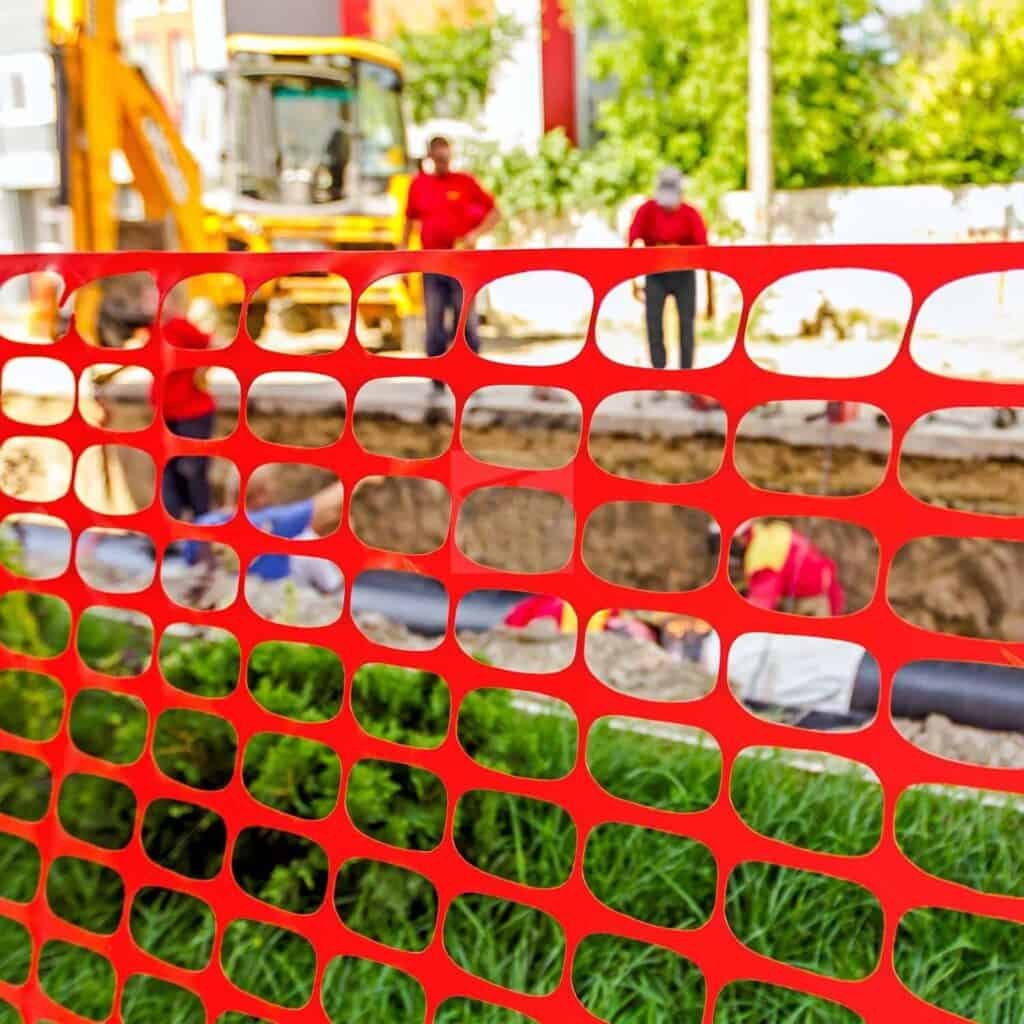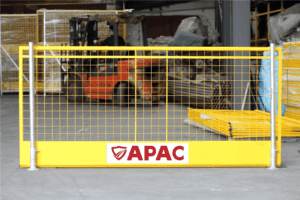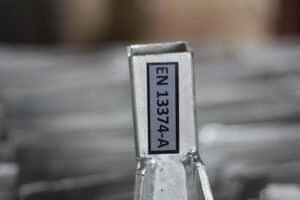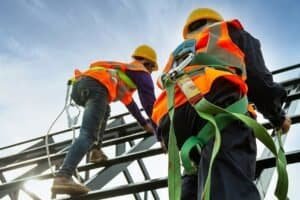Einführung
Sind Sie schon einmal an einer Baustelle vorbeigegangen und haben den leuchtend orangefarbenen Zaun bemerkt?
Es ist nicht nur zur Zierde da.
Orangefarbene Sicherheitszäune sind ein einfacher, aber wichtiger Bestandteil der temporären Baustellenabsicherung. Sie helfen dabei:
Gefahrenbereiche oder Sperrzonen kennzeichnen
Fußgänger und Fahrzeuge lenken
Menschenmengen bei Veranstaltungen kontrollieren
Schützen Sie Arbeiter und die Öffentlichkeit davor, Gefahrenzonen zu betreten
In diesem Leitfaden erklären wir Ihnen, was orangefarbene Sicherheitszäune sind, welche Materialien und Spezifikationen sie haben, wo und wie sie eingesetzt werden und wie Sie das richtige Produkt für Ihr Projekt auswählen, installieren und warten.
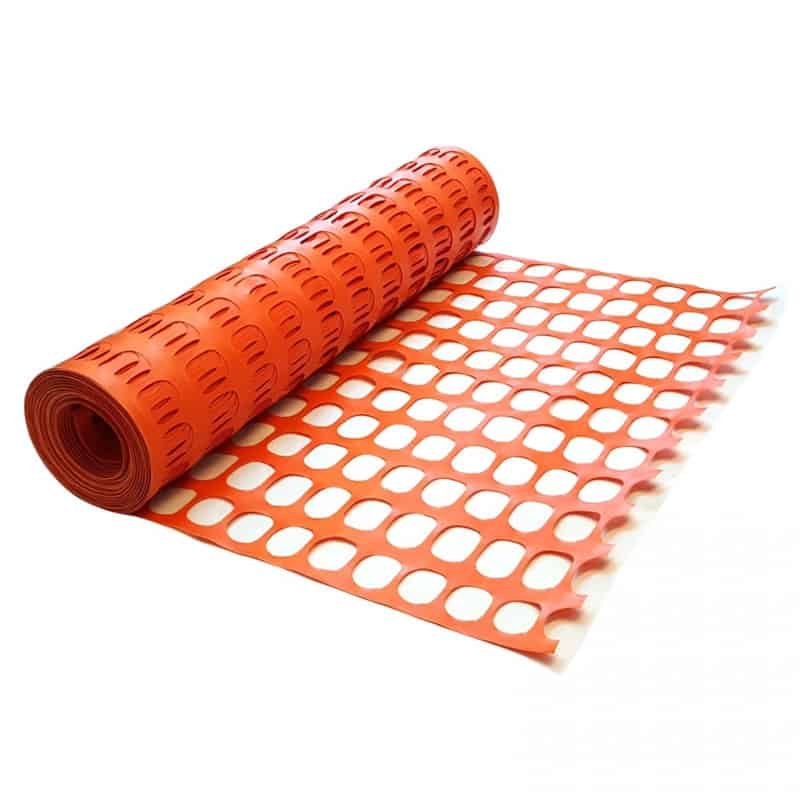
Was ist ein orangefarbener Sicherheitszaun und warum wird er so häufig verwendet?
Ein orangefarbener Sicherheitszaun ist eine temporäre Absperrung, die üblicherweise aus Kunststoffgewebe besteht und folgende Zwecke erfüllt:
Gut sichtbar – die leuchtend orange Farbe dient als deutliche visuelle Warnung.
Leicht und einfach zu handhaben – schnell zu montieren und zu demontieren
Witterungsbeständig – geeignet für den Einsatz im Freien über einen bestimmten Zeitraum
Orange wird verwendet, weil es:
Hebt sich von den meisten Hintergründen ab (Erde, Gras, Beton, Schnee).
Ist allgemein als Warn- oder Vorsichtsfarbe im Bauwesen und in der Verkehrssteuerung anerkannt.
Ist auch aus der Ferne und bei schwachen Lichtverhältnissen gut sichtbar.
In der Praxis ist der orangefarbene Sicherheitszaun oft die erste Verteidigungslinie, die signalisiert:
“Zutritt verboten – Arbeiten im Gange, Gefahrenbereich, eingeschränkter Zugang.”
Arten von orangefarbenen Sicherheitszaunmaterialien und Spezifikationen
Wenn Sie die verschiedenen Typen kennen, können Sie den Zaun auswählen, der Ihren Anforderungen am besten entspricht:
Materialien: Normalerweise aus Polyethylen hoher Dichte (HDPE) oder Polypropylen hergestellt, die langlebig und UV-beständig sind.
Mesh-Design: Gibt es in verschiedenen Mustern, beispielsweise Rauten- oder Rechteckformen, die sich auf Sichtbarkeit und Stärke auswirken.
Abmessungen: Gängige Größen sind 4 Fuß Höhe und Längen von 50 bis 100 Fuß pro Rolle.
Vorteile der Verwendung von Orange Safety Fence
Die Verwendung dieser Zäune bietet mehrere Vorteile:
Hohe Sichtbarkeit: Die leuchtend orange Farbe sorgt dafür, dass sie gut sichtbar sind und so die Unfallgefahr verringert wird.
Haltbarkeit: Hergestellt aus robusten Materialien, die verschiedenen Wetterbedingungen standhalten.
Einfache Installation: Leicht und flexibel, sodass Auf- und Abbau unkompliziert sind.
Kostengünstig: Eine kostengünstige Lösung für temporäre Absperrungen ohne Kompromisse bei der Sicherheit.
Hauptanwendungsfälle von orangefarbenen Sicherheitszäunen
Diese Zäune sind vielseitig und dienen mehreren Zwecken:
Baustellen: Sie markieren Grenzen, um Unbefugte fernzuhalten und Arbeiter zu schützen.
Öffentliche Veranstaltungen: Nützlich zur Kontrolle der Menschenmenge, zur Führung der Teilnehmer und zur Beschränkung des Zugangs zu bestimmten Bereichen.
Schneezäune: Hilft, Schneeverwehungen zu vermeiden und hält im Winter die Wege frei.
Gefahrenzonen: Kennzeichnet Bereiche mit potenziellen Gefahren und gewährleistet so die öffentliche Sicherheit.

So wählen Sie den richtigen Zaun für Ihre Bedürfnisse
Die Auswahl des passenden Zauns hängt von Ihren individuellen Anforderungen ab:
Zweck: Stellen Sie fest, ob es sich um Maßnahmen zur Kontrolle von Menschenmengen, Bauarbeiten oder Schneeräumung handelt.
Materialstärke: Entscheiden Sie sich für Gebiete mit rauem Wetter für Hochleistungsoptionen.
Maschenweite: Kleinere Maschenweiten verhindern, dass Schmutz oder kleine Tiere hindurch gelangen.
Einhaltung: Stellen Sie sicher, dass der Zaun den örtlichen Sicherheitsvorschriften und -standards entspricht.
Orangefarbene Sicherheitszäune kaufen: Vergleich der besten Händler
Mehrere Einzelhändler bieten hochwertige orangefarbene Sicherheitszäune an:
Home Depot: Bietet Produkte wie den 4 x 100 Fuß großen Sicherheitszaun „Orange Guardian“ von Tenax an.
Menards: Bietet Optionen wie den 4 x 100 Fuß großen orangefarbenen Schnee-/Sicherheitszaun.
Lieferung von Baukunststoffen: Liefert preiswerte Zäune für verschiedene Einsatzzwecke.
Berücksichtigen Sie bei der Auswahl eines Händlers Faktoren wie Produktspezifikationen, Kundenbewertungen und Verfügbarkeit.
Mieten oder Kaufen: Was ist das Beste für Ihr Projekt?
Die Entscheidung zwischen Miete oder Kauf hängt ab von:
Projektdauer: Kurzfristige Projekte können von der Vermietung profitieren.
Budget: Bei vorübergehendem Bedarf kann das Mieten kostengünstig sein, während sich für die langfristige Nutzung der Kauf besser eignet.
Lagerung: Wenn Ihnen nach dem Projekt der Lagerraum fehlt, können Sie durch das Mieten die Lagerung des Zauns vermeiden.
Lokale Lieferanten und Installationsdienste
Die Suche nach lokalen Lieferanten kann von Vorteil sein:
Bequemlichkeit: Einfachere Logistik und mögliche Kosteneinsparungen beim Versand
Unterstützung: Lokale Anbieter bieten möglicherweise Installationsdienste und schnelleren Support an.
Einhaltung: Sie sind wahrscheinlich mit den örtlichen Vorschriften vertraut und stellen sicher, dass Ihr Zaun die erforderlichen Standards erfüllt.
Installationsanleitung: So richten Sie Ihren orangefarbenen Sicherheitszaun ein
Eine fachgerechte Installation gewährleistet, dass der Zaun nicht nur sichtbar, sondern auch funktional und stabil ist.
Schritt 1: Planen Sie den Grundriss
Definiere den Bereich, der umschlossen oder markiert werden soll.
Ein- und Ausgänge (Tore oder Öffnungen) identifizieren.
Vor dem Befahren der Pfosten prüfen Sie bitte, ob unterirdische Leitungen vorhanden sind.
Schritt 2: Support-Beiträge installieren
Die Pfosten sollten in regelmäßigen Abständen aufgestellt werden: typischerweise 1,8–2,4 m (6–8 Fuß) voneinander entfernt.
Gängige Beitragsoptionen:
Stahl-T-Pfosten
Holzpfähle
Hochleistungs-Kunststoffpfosten
Die Pfosten müssen tief genug eingeschlagen werden, um Windlasten und versehentlichem Kontakt standzuhalten.
Schritt 3: Den Zaun anbringen
Rollen Sie das Netz entlang der Pfostenreihe ab.
Befestigen Sie zuerst die Oberkante mit folgendem Werkzeug:
Kabelbinder
Draht
Speziell angefertigte Clips
Für zusätzliche Stabilität sollten weitere Bänder in halber Höhe und im unteren Bereich angebracht werden.
Schritt 4: Spannung und Stabilität aufrechterhalten
Das Netz sollte ausreichend straff gespannt sein, um ein Durchhängen zu vermeiden.
An den Ecken den Zaun um den Pfosten wickeln und fest befestigen.
Für windige oder stark frequentierte Gebiete sollten Sie Folgendes in Betracht ziehen:
Engerer Pfostenabstand
Hochleistungsfähiges Netzgewebe
Zusätzliche Abspannung oder Verstrebung
Schritt 5: Regelmäßig überprüfen
Nach starkem Wind, intensiver Beanspruchung oder Stößen prüfen.
Beschädigte Teile umgehend reparieren oder ersetzen.
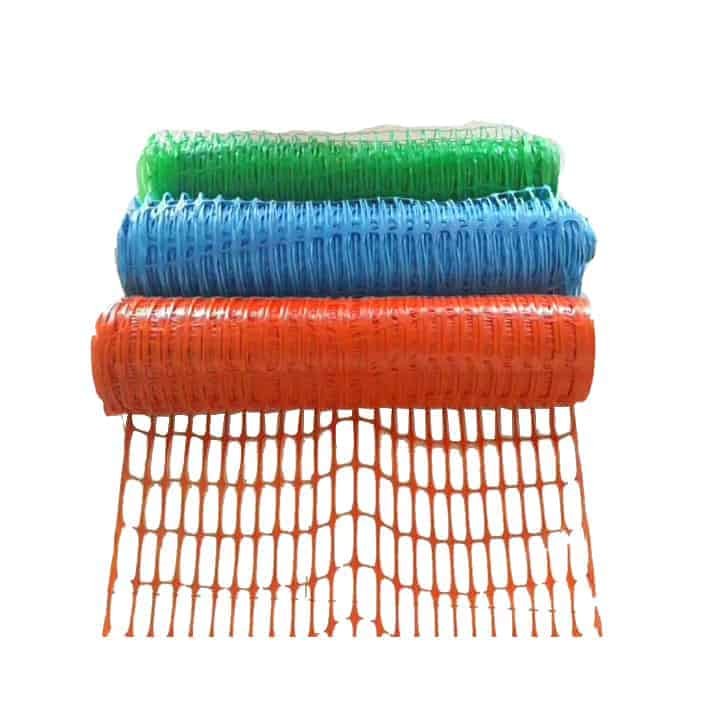
Oranger Zaun im Vergleich zu anderen Sicherheitszaunfarben
Während Orange aufgrund seiner hohen Sichtbarkeit der Standard für Sicherheitszäune ist, dienen andere Farben anderen Zwecken:
Grün: Wird häufig in der Landschaftsgestaltung verwendet, um sich in die Umgebung einzufügen.
Gelb: Zeigt Vorsicht an, wird aber beim Fechten seltener verwendet.
Blau: Bedeutet normalerweise Informationen oder interessante Punkte.
Die Wahl der richtigen Farbe hängt von der beabsichtigten Botschaft und den Sichtbarkeitsanforderungen ab.
Häufig gestellte Fragen zum orangefarbenen Sicherheitszaun (FAQ)
Warum wird Orange für Sicherheitszäune verwendet?
Orange ist gut sichtbar und wird allgemein als Warnfarbe anerkannt, weshalb es sich für Sicherheitsanwendungen eignet.
Kann ich einen orangefarbenen Zaun gegen Schnee verwenden?
Ja, orangefarbene Sicherheitszäune werden häufig als Schneezäune verwendet, um Schneeverwehungen zu kontrollieren und Wege frei zu halten.
Ist ein orangefarbener Zaun von der OSHA zugelassen?
Obwohl die OSHA keine Zaunfarben vorschreibt, wird aufgrund der besseren Sichtbarkeit häufig Orange verwendet, um Sicherheitsstandards zu erfüllen.
Wie lange hält ein Kunststoff-Sicherheitszaun?
Bei richtiger Pflege können diese Zäune je nach Umgebungsbedingungen und Nutzung mehrere Jahre halten.
Wie viel kostet es pro Rolle?
Die Preise variieren je nach Qualität und Größe, aber im Allgemeinen liegt der Preis einer 4 x 100 Fuß großen Rolle zwischen $20 und $50.
Kann ich orangefarbene Zäune wiederverwenden?
Ja, wenn der Zaun nach der Verwendung unbeschädigt bleibt, kann er aufgerollt und für zukünftige Projekte aufbewahrt werden.
Visuelle Galerie und Anwendungen aus dem echten Leben
Wenn Sie diese Zäune in Aktion sehen, können Sie bessere Einblicke gewinnen:
Baustellen: Markieren Sie Gefahrenbereiche, um unbefugten Zugriff zu verhindern.
Öffentliche Veranstaltungen: Lenkung von Menschenmengen und Abgrenzung von Sperrzonen.
Schneemanagement: Wird entlang von Straßenrändern platziert, um die Schneeansammlung auf Gehwegen zu verringern.
Fazit: Wählen Sie den richtigen orangefarbenen Zaun, um sicher, konform und kostengünstig zu bleiben
Orangefarbene Sicherheitszäune sind unverzichtbar für Sicherheit und Ordnung in verschiedenen Umgebungen. Wenn Sie sich über ihre Verwendung, Vorteile und Installationsprozesse informieren, können Sie den passenden Zaun für Ihre spezifischen Anforderungen auswählen und so Sicherheit und Konformität gewährleisten.


